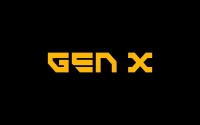So, Aster hit the pause button on its big money giveaway. The official reason? "Potential data inconsistencies." Give me a break. That’s the crypto equivalent of a politician saying they’re "exploring other opportunities" after getting caught with their hand in the cookie jar. It’s a meaningless, sterile phrase designed to calm everyone down while the team frantically tries to figure out how they screwed up the math on their own magic internet money.
Let’s translate this from PR-speak into plain English. The airdrop checker went live, and within hours, the pitchforks came out. People who had been sloshing millions in volume through the Aster DEX—playing the game exactly as they were told—looked at their promised allocation and saw pocket change. One guy on X claimed he did $9 million in volume for a measly 336 ASTER tokens. You don’t need a PhD in tokenomics to know that stinks.
This wasn't a quiet little bug found by their internal team. No, this was a full-blown public revolt. The "potential data inconsistencies" weren't potential until their customers, the very people they're trying to lure from competitors, started screaming that the emperor had no clothes. So they delayed it by a week. A week to fix a fundamental calculation that their entire incentive program is built on. And they have the nerve to say that "for most users," the new numbers won't be lower. That’s not a reassurance; it's an admission that for some users, they absolutely will be.
But who are we kidding? Was anyone really surprised? This entire ecosystem is running on fumes and the promise of a big payday.
The Airdrop Casino Never Closes
This whole situation is a perfect snapshot of the so-called "DEX Wars." It's not a war of technology or user experience. It’s a war of incentives, a high-stakes shell game where platforms like Aster, Hyperliquid, and Lighter are locked in a desperate battle for your attention, and more importantly, your trading fees. The weapon of choice? Airdrops. Free money, or at least the promise of it.
This whole airdrop farming scene is like a casino handing out free chips, but the catch is you have to spend all day at the slot machines, pulling the lever over and over. The house knows most people will just feed the chips right back into the machine. The "volume" they generate isn't real economic activity; it's just the sound of the lever being pulled by thousands of hopefuls trying to hit a jackpot that might not even be real.

And the numbers are getting absurd. Aster, backed by Binance’s own CZ, was briefly at the top of the leaderboards, reporting insane volumes. Then data-tracking site DefiLlama just… delisted them. Why? Because their XRP trading volume was a near-perfect mirror of Binance's, as detailed in reports like XRP Volumes on Aster DEX Mimic Those on Binance, Putting Focus on the Market’s Current Obsession. It was so blatant that it raised immediate questions about wash trading. This is a bad look. No, 'bad' doesn't cover it—this is a five-alarm dumpster fire of credibility. When your trading activity looks like a carbon copy of the biggest exchange on the planet, it doesn't suggest you've captured organic interest. It suggests you're tracing a picture out of a coloring book and calling it a masterpiece.
What does it say about the state of DeFi when a top contender for the DEX crown gets its data pulled for being too suspicious? And what does it say about the users who are still pumping billions through the platform, chasing an airdrop that the platform itself can't even calculate correctly on the first try? It ain't a good look for anyone.
A System Built on Sand
The real story here isn't a simple delay. It's the fragility of the entire narrative. Aster's growth, according to analysts who actually look under the hood, is "very narrative-driven," fueled by traders "recycling capital to increase volumes." That’s a polite way of saying people are trading back and forth with themselves to farm points. This isn't building a new financial system; it's gamifying a bubble.
The project’s connection to Changpeng "CZ" Zhao gives it a sheen of legitimacy, sure. People see the Binance connection—and headlines proclaiming Binance founder CZ champions Aster amid impressive token debut—and think it's a sure bet. But CZ’s endorsement doesn't magically create genuine product-market fit. It just attracts more gamblers to the casino. They're offering up to 1,001x leverage, for God's sake. That isn't a tool for sound financial planning; it's a rocket ship strapped to a block of C4.
And this is where I get tired. I've seen this movie before. A new project with a big name backer, a hyped-up token, promises of a massive airdrop, and trading volumes that defy logic. Then, the first crack appears. A delay. A "data inconsistency." A delisting. It’s the same cycle over and over again, and we’re all supposed to pretend this is the future of finance. I'm just waiting for my flying car, I guess. That feels more realistic at this point.
The real test for the Aster crypto project, and for all the others playing this game, is what happens when the music stops. What happens when the airdrop rewards dry up? Will all that "volume" vanish overnight? Will the users stick around when there are no more free chips being handed out? I think we all know the answer. Offcourse, maybe I'm just a cynic. Or maybe I've just been watching this space long enough to know a house of cards when I see one.
Same Circus, Different Clowns
Let's be brutally honest for a second. This isn't about "data inconsistencies." This is about a business model built on hype, leverage, and the promise of free money that got too complicated for its own creators to manage. They launched the hype train, sold the tickets, and then realized they forgot to build the tracks. The delay is just them frantically laying down rails a few feet ahead of a speeding locomotive. This whole episode isn't a bug; it's a feature of a system that prioritizes manufactured volume over genuine utility every single time. And we're all just watching, waiting for the inevitable crash.









